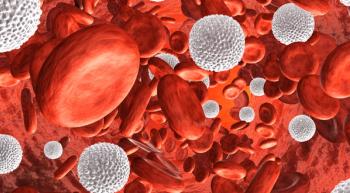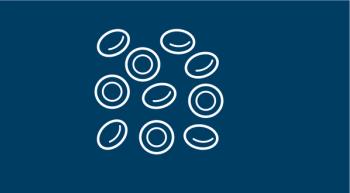
BLA Resubmission Accepted by the FDA for Remestemcel-L in Pediatric Steroid-Refractory aGVHD
The biologics license application that was resubmitted for remestemcel-L has been accepted by the FDA for the potential treatment of children with steroid-refractory acute graft-vs-host-disease.
The resubmission of a biologics license application (BLA) has been accepted by the FDA, which seeks approval of remestemcel-L (Ryoncil) for the treatment of pediatric patients with steroid-refractory acute graft-vs-host-disease (SR-aGVHD).1
The BLA, which was resubmitted on July 8, 2024, addressed chemistry, manufacturing, and control issues. In March 2024, the FDA also informed Mesoblast, the developer of remestemcel-L, that clinical data from the phase 3 MSB-GVHD001 trial (NCT02336230) were adequate to support another submission.
“We are pleased that FDA has accepted our BLA resubmission for review and look forward to the potential approval of [remestemcel-L] for children with SR-aGVHD,” Silviu Itescu, MBBS, FRACP, chief executive officer of Mesoblast, stated in a news release.
The initial BLA for remestemcel-L received priority review from the FDA in April 2020, based on pooled data from 3 separate trials of 309 pediatric patients with SR-aGVHD.2
Although the
In March 2023, the FDA accepted a BLA resubmission seeking the approval of remestemcel-L for pediatric patients with SR-aGVHD; however, the regulatory agency issued another CRL in August 2023, citing the need for more data to support the approval.5,6
MSB-GVHD001 enrolled 54 pediatric patients with aGVHD who did not respond to steroids. Results showed that remestemcel-L produced an overall response rate (ORR) of 70.4% at day 28 vs the prespecified ORR of 45% (P = .0003), meeting the study’s primary end point. The 100-day overall survival (OS) rate was 87% for patients who achieved a response at day 28 vs 47% for those who did not have a response at day 28 (P = .0001).1
Additionally, the 28-day ORR was 70% for remestemcel-L compared with 43% in a matched control group of pediatric patients from the Mount Sinai aGVHD International Consortium (MAGIC) who were treated with best available therapy. The respective 100-day OS rates were 74% vs 57%. A propensity-matched study of outcomes in 25 patients treated during the phase 3 trial and 27 patients from a control group derived from the MAGIC database showed that 67% of high-risk pediatric patients treated with remestemcel-L experienced a response at day 28 and were alive after 180 days vs 10% for the control group.
Furthermore, a 4-year survival study conducted by the Center for International Blood and Marrow Transplant Research that included 51 evaluable patients with SR-aGVHD treated during the phase 3 trial showed that the 6-month, 1-year, 2-year, and 4-year OS rates were 67%, 63%, 51%, and 49%, respectively.
MSB-GVHD001 was a single-arm, prospective trial that enrolled pediatric patients between 2 months and 17 years of age with grade B to D aGVHD requiring systemic therapy with corticosteroids. A lack of response to steroids was required, defined as progression within 3 days or no improvement within 7 days.7
Patients with grade B aGVHD who had skin-only involvement were excluded. Additionally, patients were not allowed to have received any second-line therapy for aGVHD prior to enrollment.
All enrolled patients received remestemcel-L at 2 x 106 MSCs/kg twice per week for 4 consecutive weeks, with doses given at least 3 days apart and no more than 5 days apart. Eligible patients were then allowed to received remestemcel-L once per week for 4 consecutive weeks, or twice per week for 4 consecutive weeks in the event of an aGVHD flare up.
ORR at day 28 was the trial’s primary end point, and 100-day OS rate was a secondary end point.
References
- FDA accepts Mesoblast’s biologics license application (BLA) for Ryoncil in children with steroid-refractory acute graft-versus-host disease (SR-aGVHD). News release. Mesoblast Limited. July 23, 2024. Accessed July 23, 2024. https://investorsmedia.mesoblast.com/static-files/9a696437-abbb-4183-822f-9f74c1da5504
- FDA accepts Mesoblasts biologics license application for Ryoncil and agrees to priority review. News release. Mesoblast Limited. April 1, 2020. Accessed July 23, 2024. https://investorsmedia.mesoblast.com/static-files/1ee6fcd5-de79-4645-bc09-1f1fe8864047
- Baird K. FDA session on clinical evidence: BLA 125706: Remestemcel-L. August 13, 2020. Accessed July 9, 2024. https://www.fda.gov/media/141131/download
- Mesoblast receives complete response letter from the FDA for biologics license application for steroid-refractory acute graft versus host disease in children. News release. Mesoblast Limited. October 2, 2020. Accessed July 9, 2024. https://investorsmedia.mesoblast.com/static-files/1e259fcb-77ba-470c-91af-1c71e5fa32e0
- FDA accepts Mesoblast’s resubmission of the biologic license application for remestemcel-L in children with steroid-refractory acute graft versus host disease as a complete response and sets goal date of August 2, 2023. News release. Mesoblast Limited. March 7, 2023.
- Mesoblast receives complete response from US Food and Drug Administration for biologics license application for steroid-refractory acute graft versus host disease in children. News release. August 3, 2023. Accessed July 23, 2024. https://www.globenewswire.com/news-release/2023/08/04/2718706/0/en/Mesoblast-Receives-Complete-Response-From-U-S-Food-and-Drug-Administration-for-Biologics-License-Application-for-Steroid-Refractory-Acute-Graft-Versus-Host-Disease-in-Children.html
- A prospective study of remestemcel-L, ex-vivo cultured adult human mesenchymal stromal cells, for the treatment of pediatric participants who have failed to respond to steroid treatment for acute graft-versus-host disease (aGVHD). ClinicalTrials.gov. Updated March 17, 2022. Accessed July 10, 2024. https://clinicaltrials.gov/study/NCT02336230
Newsletter
Knowledge is power. Don’t miss the most recent breakthroughs in cancer care.
















































































